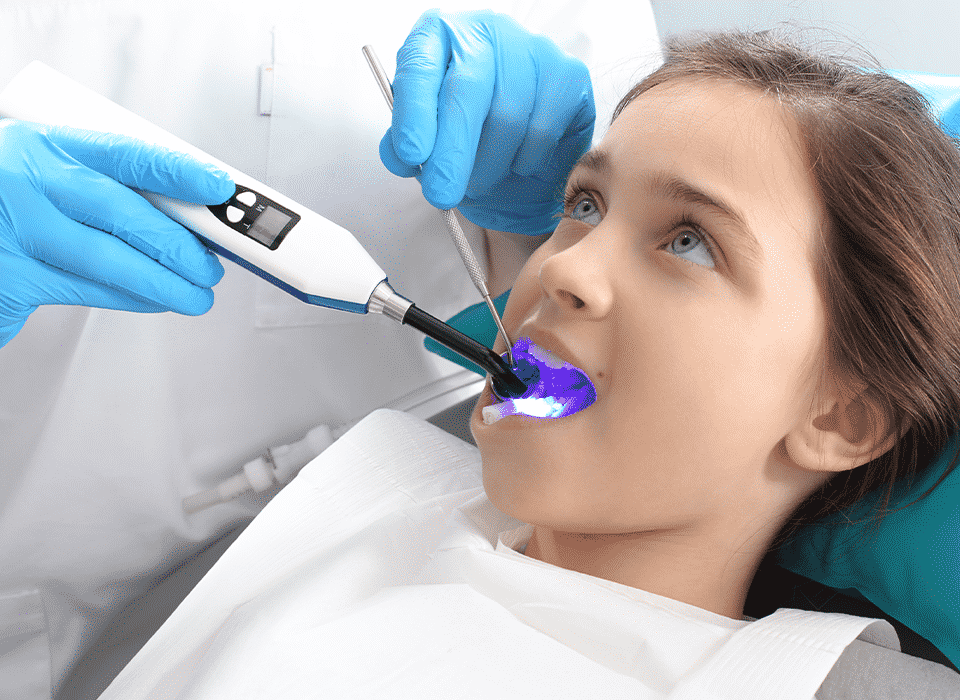Sealants provide protection to the grooves of teeth to prevent decay and cavities. We recommend sealants for all of our age groups, as some are unable to perform a thorough cleaning in those hard-to-reach spots of their mouth. Sealants can only be performed on cavity free teeth. We use BPA-free dental sealants in our office. If you are interested in more information on sealants for your child, call today to schedule a consultation.
What is a dental sealant?
A sealant provides protection from food getting stuck in the pits and grooves of your teeth thus preventing the tooth from getting decay and cavities.
Who should get sealants?
We normally recommend sealants on the molars with deep pits and grooves as they fully erupt into the mouth. Usually the first molars (six-year-old molars) are fully erupted by age 8 and the second molars (twelve-year-old molars) are fully erupted by age 14.
Can you put a sealant on a tooth with a cavity?
Sealants are a means of prevention and can only be placed on teeth without decay or cavities.
Does it hurt to get sealants?
Sealant placement is a pain-free procedure that may have a lifetime of benefit for its characteristics of prevention of decay and cavities. There is no pain or discomfort after the sealant placement.
How long after a sealant can I eat?
Since sealant placement does not involve local anesthesia, patients are able to eat and drink immediately after sealant placement.
How long do sealants normally last?
On average, sealants last for about 5 years depending on your diet and your consumption of sticky food products. Even though there is normal wear to the sealants, the remnants of the sealant material may still serve as prevention of cavities and decay.
Sealants are a great tool for prevention of cavities and decay. If you have any questions or concerns, please do not hesitate to contact us to schedule a consultation.

